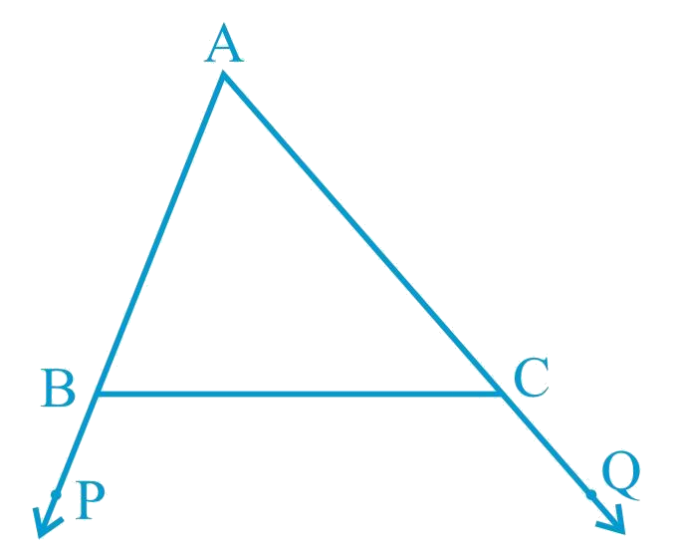In Fig. 7.48, sides AB and AC of Δ ABC are extended to points P and Q respectively. Also, ∠PBC < ∠QCB. Show that AC > AB.

Solution:
Let's look into the solution below.

In the given figure,
∠ABC + ∠PBC = 180° [Linear pair of angles]
Also, ∠ABC = 180° - ∠PBC ... (1)
∠ACB + ∠QCB = 180° [Linear pair]
∠ACB = 180° - ∠QCB ... (2)
As ∠PBC < ∠QCB (given),
180o - ∠PBC > 180o - ∠QCB
∠ABC > ∠ACB [From Equations (1) and (2)]
Thus, AC > AB (Side opposite to the larger angle is larger).
Hence proved, AC > AB.
☛ Check: NCERT Solutions for Class 9 Maths Chapter 7
Video Solution:
In Fig. 7.48, sides AB and AC of Δ ABC are extended to points P and Q respectively. Also, ∠PBC < ∠QCB. Show that AC > AB.
NCERT Maths Solutions Class 9 Chapter 7 Exercise 7.4 Question 2:
Summary:
If sides AB and AC of ΔABC are extended to points P and Q respectively, ∠PBC < ∠QCB, we have proved that AC > AB
☛ Related Questions:
- In the given figure, ∠B < ∠A and ∠C < ∠D. Show that AD < BC.
- AB and CD are respectively the smallest and longest sides of a quadrilateral ABCD (see Fig. 7.50). Show that ∠A > ∠C and ∠B > ∠D.
- In Fig 7.51, PR > PQ and PS bisects ∠QPR. Prove that ∠PSR > ∠PSQ.
- Show that of all line segments drawn from a given point not on it, the perpendicular line segment is the shortest.
Math worksheets and
visual curriculum
visual curriculum
